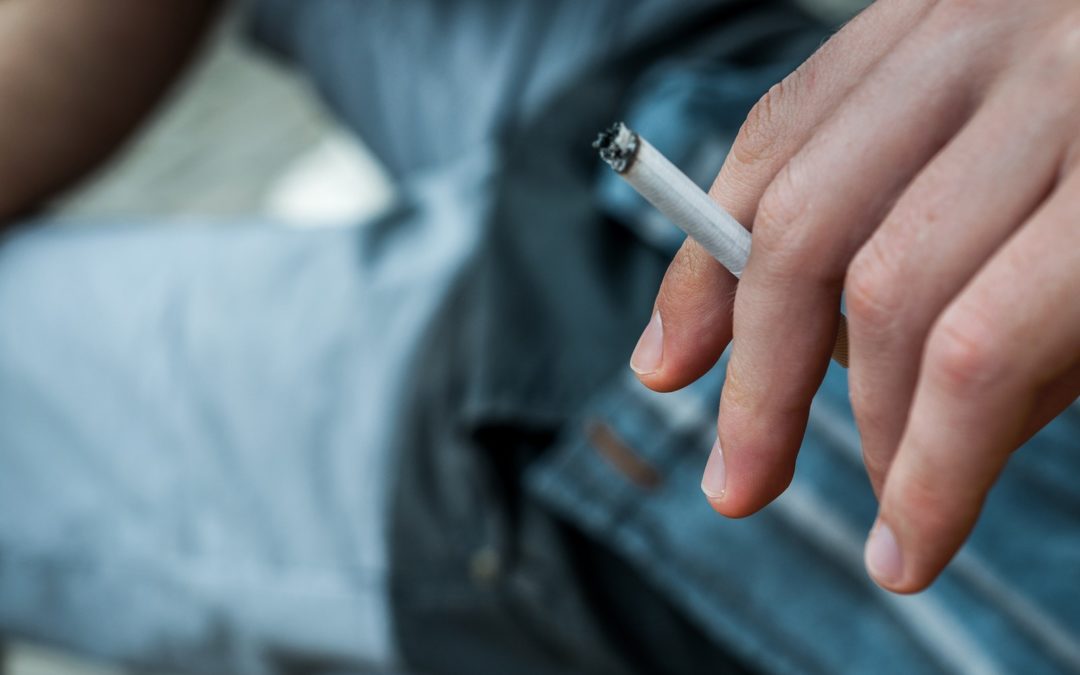Table of Contents
Teen drug overdose deaths have been a large part of the conversation around the US drug crisis, which saw a quick spike in deaths over the past decade, mainly driven by synthetic opioids such as fentanyl. According to the CDC, 10% to 15% of opioid overdose deaths were among youth and young adults aged 15 to 24 [1].
It’s essential for parents, educators, healthcare professionals, and anyone who works with youth to understand the signs of an overdose, what to do in an emergency, and how to prevent it from happening.
What is an Overdose in Teens?
An overdose is when a teen takes a toxic or excessive amount of a substance such as alcohol, illicit drugs, prescription medication, or over-the-counter medication. It leads to severe and life-threatening symptoms that impair functions necessary for survival, such as breathing, heartbeat, and consciousness. Without quick medical intervention, an overdose can result in death. From 2010 to 2019, an estimated 8,000 teens died from drug overdoses, many opioid related [1].
The Difference Between Overdose and Drug Poisoning
Drug overdoses refer specifically to taking excessive amounts or more than the recommended dose of a drug or substance, which can lead to harmful effects or toxicity. It can be intentional or accidental.
Drug poisoning is a broad term that includes a range of exposure to drugs and alcohol, and can include overdose. For example, alcohol poisoning happens when a person drinks an excessive amount of alcohol in a short amount of time, causing toxic levels of alcohol in the bloodstream and symptoms such as blacking out and vomiting. Drug poisoning can also happen unknowingly, such as from ingesting drugs that have been altered or laced (e.g., taking a stimulant that unknowingly has fentanyl)
Substances Commonly Involved in Teen Overdoses
Drug overdoses are caused through various biological mechanisms, and youth tend to be more at risk of dangerous drug responses due to other factors such as stage of development, chemical makeup, and metabolism. A few common drugs that can lead to overdoses in youth include [2][3]:
- Opioids such as fentanyl or prescription pain pills can drastically reduce brainstem activity, which controls essential functions such as breathing, heart rate, consciousness, and digestion. According to recent studies from the National Institute on Drug Abuse, fentanyl contributes to over half of all overdose deaths in teens.
- Depressants such as alcohol or benzodiazepines reduce brain activity and impair brainstem activity. Similar to opioids, they can lead to respiratory failure, although not as quickly, and the damage is often less reversible.
- Stimulants such as cocaine, meth or study drugs like Adderall, Vyvanse, or Ritalin increase heart rate, blood pressure, and body temperature, sometimes to dangerous levels. Although overdoses are less common than with opioids, stimulant abuse can trigger seizures, strokes, and even heart attacks in youth or young adults.
- Polysubstance use refers to mixing more than one drug. 68% of teen stimulant overdoses were associated with an opioid, highlighting how mixed substance use can significantly increase the risk of fatal overdose, as the effects of one drug can often exacerbate or complicate the effects of another.
The Dangers of Fentanyl Overdose in Teens
Fentanyl is a synthetic, potent opioid nearly 50 times stronger than heroin and 100 times stronger than morphine. It has contributed to a majority of drug-related overdoses and deaths in both teens and adults in the US. Nearly 90% of teen overdose deaths involve opioids, and 84% of those involve illicit fentanyl, highlighting fentanyl’s central role in these fatalities [4].
How Fentanyl Is Infiltrating Teen Drug Use
Fentanyl is killing teens, many unknowingly, due to its presence in other drugs. Illegal manufacturers often cut drugs with fentanyl due to its cheap, addictive properties, without regard for human life. Teens may consume counterfeit pills that look like prescription medications such as Xanax, but contain potent amounts of fentanyl and other harmful chemicals such as Xylazine. These “designer pills” are widely sold on social media such as private Snapchat accounts, Finstas (fake Instagrams), and Reddit. [4].
Signs of Fentanyl-Specific Overdose
Due to the potency of fentanyl, symptoms come on quickly, and overdoses can happen within a matter of minutes. Common signs of a fentanyl overdose include:
- Slow, shallow, or stopped breathing within 5 minutes or less.
- Loss of consciousness, no response to external stimulation, calling their name, shaking them, etc.
- Cold, clammy skin or a bluish tint to lips or nails due to lack of oxygen
- Constricted, pinpoint pupils.
How to Recognize an Overdose
Different drugs may present with their own subset of symptoms; however, there are general signs of a drug overdose or alcohol poisoning that indicate a medical emergency. These include physical warning signs, behavioral traits, and mental confusion that require immediate attention.
Physical Symptoms of a Teen Overdose
- Vomiting, severe nausea, fever, chills
- Chest pain, shallow breathing
- Pale or blue lips or fingertips
- Low body temperature, clammy or cold hands
- Dilated or pinpoint pupils (depending on the drug)
- Choking, gurgling, or snoring sounds
- Irregular or reduced breathing or heart rate
- A drastic increase or decrease in blood pressure
- Seizures, convulsions, or tremors
Behavioral Warning Signs and Mental Confusion
- Difficulty walking, talking, or staying awake
- Mental confusion, loss of perception of time, or sense of self
- Agitation, paranoia, or hallucinations (common in stimulants such as meth)
- Extreme drowsiness, mental fatigue, unresponsive or catatonic
What to Do in the Event of an Overdose
It’s important that if you recognize the signs of an overdose (whether you suspect drugs are involved or not), to call 911 and follow the steps below.
If you are a friend of the teen or fear you may get in trouble, many states have Good Samaritan laws protecting those who call for emergency services during an overdose from legal consequences.
Step-by-Step Response for Parents
- Check breathing, responsiveness, try to speak to them. If they are not breathing normally or are unresponsive, call 911 immediately.
- Give 911 your location, describe the situation of your teen (not breathing, possible overdose, unresponsive).
- Administer Naloxone (Narcan) if it’s available. This reduces the effect of opioid overdoses and is safe to use even if you’re unsure opioids are involved.
- Provide CPR if you know how, and support their breathing by tilting their head back, pinching the nose, and giving them one slow breath every 5 seconds, watching for their chest to rise or make a movement.
- If the teen is breathing, place them in the recovery position by rolling them on their side with their hands supporting their head and knees bent to prevent them from choking on vomit.
- Stay until help arrives. Continue monitoring breathing and responsiveness. Provide comfort and reassurance.
- Hospitals help medically stabilize teens after an overdose and highly encourage you to connect your teen to substance abuse treatment, such as an inpatient rehab program.
Preventing Teen Overdose Before It Happens
The Department of Health and Human Services has reported that widespread, community prevention efforts work and are essential in reducing overdoses and drug-related deaths.
Open Conversations and Education
Implementing comprehensive drug education into school curriculums and increasing student awareness campaigns around the dangers of drug use, especially opioids and fentanyl, has shown success.
Virginia reported a 44% drop in fentanyl-related overdose deaths in 2024, credited to an approach that included law enforcement crackdowns, public education campaigns, and widespread training on harm reduction [6].
Harm Reduction Efforts
If your teen has struggled with a substance abuse problem in the past or is at risk of one, it’s a good idea to keep Narcan in the home for times of emergency. It’s safe for all ages, even if opioids are present or not, non-habit forming, and offered through many pharmacies, medical clinics, and Narcan distribution measures as an effective prevention method.
Narcan administration is a form of harm reduction with proven success in reducing the number of overdose-related emergency room visits and deaths. The CDC reported a 24% decline in opioid-related deaths this year, which contributed to the distribution of naloxone [7].
Administering Naloxone (Narcan) Safely
Narcan can be administered both as an injection and as an intranasal spray, but the nasal spray is more common in community and emergency settings because it is easier and safer to use without medical training.
Many public access naloxone programs provide take-home kits with nasal spray formulations to maximize safe and rapid administration by the general public [5].
- As soon as you notice signs of an overdose, call 911.
- Take Narcan® Nasal Spray out of the box.
- Peel back the tab with the circle to open the Narcan® Nasal Spray.
- IMPORTANT: Do not remove Narcan® until you are ready to use it, and do not test the device.
- Hold the Narcan® Nasal Spray with your thumb on the bottom of the plunger and your first and middle fingers on either side of the nozzle.
- Tilt the teen’s head back and provide support under the neck with your hand.
- Gently insert the tip of the nozzle into one nostril until your fingers on either side of the nozzle are against the bottom of their nose.
- Press the plunger firmly to give the dose of Narcan® Nasal Spray.
- Remove the Narcan® Nasal Spray from their nostril after giving the first dose.
- Wait and watch the person closely. If the person does not respond within 2 minutes, repeat the steps and administer the second dose of Narcan® Nasal Spray from the box.
- Roll the teen on their side and place them in the ‘recovery position’ with their hands supporting their head and knees bent to prevent them from rolling onto their stomach. Continue to monitor closely until an ambulance arrives.
Providing Education and Support for Teens and Their Families in Texas
Clearfork Academy is a network of behavioral health facilities in Texas committed to helping teens recover from behavioral addictions, substance abuse, and mental health disorders. We understand the importance of overdose prevention, harm reduction, and community strategies to reduce drug-related fatalities in youth and families.
If you think your teen is struggling with substance abuse, reach out to our team, and we can support your family.
Sources
[1] Provisional Drug Overdose Death Counts. 2023. CDC.
[2] Angela, C. et al. 2025. Opioid Toxicity. Stat Pearls. National Library of Medicine.
[3] Dinapoli, T. 2022. Continuing Crisis of Drug Overdose Deaths in New York. Office of Policy and Budget Analysis.
[4] Fentanyl Overdose Prevention. 2024. CDC.
[5] Naloxone (nasal route). 2025. Mayo Clinic.
[6] Vakharia, S. Overdose deaths are going down: health, harm reduction approaches play a big role. 2024. Health Policy Alliance.
[7] Naloxone Dispensing Rate Maps. 2024. CDC.

Meg Sherman
Family Program Therapist
Meg Sherman holds a Master of Arts in Marriage and Family Therapy from Utah Valley University, is licensed as a Marriage & Family Therapy Associate and Chemical Dependency Counselor in the state of Texas, and focuses her professional areas of study on trauma recovery, neuroscience, and relationship dynamics.
She has over 20 years of experience working with adolescents, first as a church youth group leader, then as a high school theatre teacher. Following the joys and challenges of helping her children through various diagnoses and substance use struggles, Meg entered the mental health field and pursued training in EFIT, Gottman, and EMDR techniques.
She currently lives in Granbury with her husband and an utterly spoiled cat, where she enjoys playing harp/piano, composing music, and writing young adult fiction.




